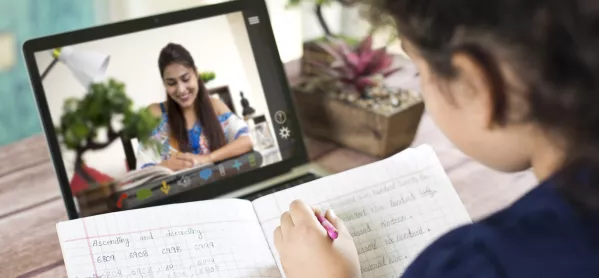- Home
- 5 ways schools can make remote learning sustainable
5 ways schools can make remote learning sustainable

So many phrases are used to define a form of learning as a specific style of teaching: inquiry learning, project-based learning, skills-based learning, and so forth.
In the past three months, several new terms have come into common usage: home learning, distance learning, blended learning - all of these are now familiar terms, but each one means something different in a different context.
Of course, the speed with which education had to change around the world was astonishing, with educators creating new learning methods, styles and resources almost overnight to ensure learning could continue. As such, it is not surprising things may look different across different settings.
What’s important now, though, is that schools recognise that these changes may be here for a while yet and consider how to make what at first may have appeared short-term become sustainable mid-to-long term changes.
Making remote learning work in the long term
1. Paring back to what is really important
Devising a skeleton curriculum for this end of the school year was hard but not impossible.
We worked out the end of units of work, and found creative ways to complete them, and then used the final days back in school to rebuild the social-emotional programme and to support the changes our students have gone through.
Revision and consolidation of key skills continued in the home-learning tasks.
This works well, at this end of the year, but it would be a different ball game if we have to begin a new year in this format - a whole different plan.
This is something that, hard as it is, we may need to start putting into planning meetings.
2. Feedback and assessment
Receiving evidence of learning from our young students, through our online platform, included photos of them completing tasks, and of the finished work, videos of problem-solving and work completed on a device. Many parent emails have described how their individual child had attempted the work.
However, sending meaningful feedback on work quickly became unmanageable. We, therefore, devised a “communication and feedback” sheet for each student, where the teachers, student and parent could all comment within one rolling document.
Assessments are taking place during in-school days for some students, but the real evidence of learning will only be seen after a summer break.
As such, grading and report cards at this time will comment on engagement, perseverance, independence and approaches to learning, rather than on an achievement grade, which, for us, would be both unfair and irrelevant.
3. A viable blended learning set-up
Returning to school has been a positive experience, for the most part.
Working on a system of two days in school, and two days at home, planned on a four-day rotation, was complex, but it means all students have an equal number of in-school days before the summer break.
In moving forwards, there will need to be a discussion as to the sustainability of this, with questions over planning and preparation time for teachers, substitution and cover for absent colleagues, and the complexities of a four-day system, in a five-day weekly pattern.
There will be some adjustments and adaptations if and when the plan is reintroduced. It may be here for a while yet.
4. Teacher workload and life balance
I am immensely proud of all of my teaching staff for the way they embraced the challenges of the sudden change and the instant transition to unfamiliar teaching methods that were thrust upon us all.
Some spent time in the break pursuing online training to support their technology skills, others have shared their expertise, but all have had to contend with a very different workload, an intensity of planning for small groups, creating online instruction and recorded lessons, and innovative static activities for young children, while managing the stress of their own lives in this unprecedented time.
While this works for the short-term completion of the school year, there are some big questions to face if this way of learning and teaching becomes the “new normal”.
Creating a manageable curriculum framework while maintaining the level of delivery, of which we are proud, will take careful organisation and some deep thinking as to what we deem to be essential learning for our students.
5. Managing parent expectations
One of the most unexpected aspects we had to deal with during this time was the diverse expectations from parents and care-givers. In any one class, the extremes were astonishing.
From concerns that “teachers are not online all the time”, or “the teacher is not responding fast enough”, to the frustration that “the workload for students is far too much, it is unworkable”, or even “I do not want my child anywhere near technology - we are off-grid, and will only connect once a week at most.”
Keeping continuity of learning, and maintaining our own standards and expectations while being mindful of individual circumstances, is a constant and ongoing concern to be addressed as the situation evolves and changes.
Throughout the past 10 weeks, our community has pulled together to meet the challenges of the global pandemic, in our own context, and to support one another, in these unprecedented times, giving our all for our students.
This, I know, will continue to be the strength of our school in the coming year.
Sarah Ford is the elementary principal at Danube International School, Vienna, working with pupils aged 3-11 in an IB World School
Keep reading for just £1 per month
You've reached your limit of free articles this month. Subscribe for £1 per month for three months and get:
- Unlimited access to all Tes magazine content
- Exclusive subscriber-only stories
- Award-winning email newsletters


